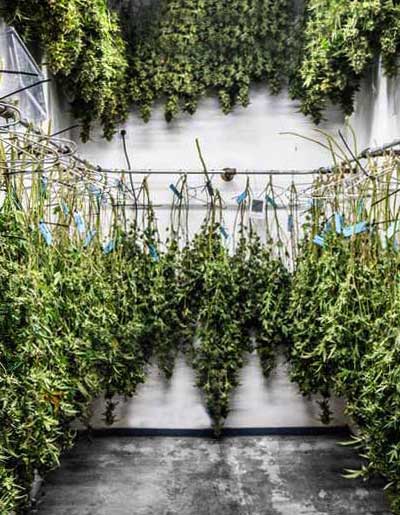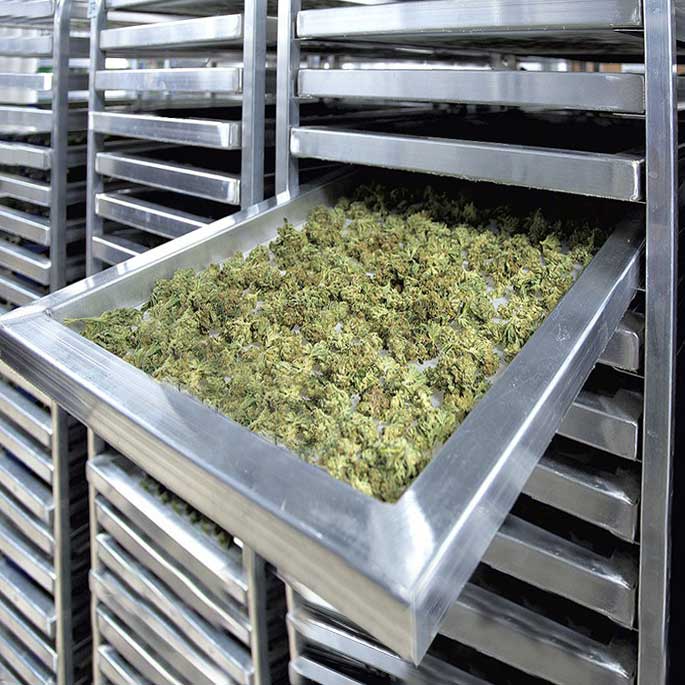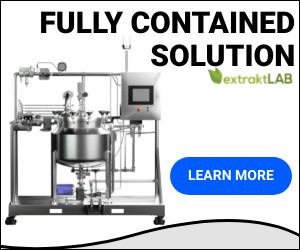Industrial drying is a process used to reduce the moisture content of materials. Reducing moisture is a vital step in many industrial processes, from food and pharmaceuticals to woodworking and construction. In this article, we’ll investigate the numerous industrial drying strategies accessible, such as fluid bed dryers, tray dryers, and rotary dryers. We’ll also look at how temperature control, light control, and humidity control play important roles in successful industrial drying operations as well as some of the key differences between pharmaceutical-grade versus industrial-grade processes for optimal results.
Table of Contents:
- Introduction to Industrial Drying
- Fluid Bed Dryer
- Tray Dryer
- Rotary Dryers
- FAQs in Relation to Industrial Drying
- Conclusion
Introduction to Industrial Drying
Industrial drying is employed in many different fields, from food production to pharma, chemicals, and fabric manufacture to papermaking. This can be done using various types of equipment, such as fluid bed dryers, tray dryers, and rotary dryers. Each type has its own advantages and applications depending on the nature of the product being dried.
What is Industrial Drying?
Removing moisture from materials or products using high temperatures to reduce their weight and volume is known as industrial drying. Industrial dryers are employed to preserve the integrity of goods that require long-term storage and remove moisture. In addition, industrial drying helps increase shelf life by reducing microbial activity, which would otherwise occur when water molecules are present in the product’s environment.
Benefits of Industrial Drying
A huge benefit of using industrial dryers is that weight and volume are reduced, which makes it easier for companies to transport goods over long distances without incurring additional costs associated with extra packaging materials or fuel costs related to heavier loads. It also reduces spoilage due to microbial growth since most microorganisms require water molecules in order to survive, thus making it unlikely for them to thrive within a drier environment. Finally, industrial drying increases shelf life since many products degrade more quickly when exposed to high levels of humidity, which could cause mold formation or other forms of damage.
Types Of Industrial Drying Equipment
Industrial drying is an essential process in botanical processing, and a fluid bed dryer is one of the most commonly used types of industrial drying equipment. Comprehending its operation and the benefits it brings can help you decide if this is a suitable option for your requirements.

Fluid Bed Dryer
A fluid bed dryer is an industrial drying system that uses a stream of hot air to remove moisture from wet materials. The material is exposed to hot air, allowing the water to evaporate and be carried away by the airstream, resulting in dried products with minimal heat damage or oxidation.
How does a fluid bed dryer work? A fluid bed dryer consists of two main components: an air distributor plate and a perforated bed plate. The air distributor plate sits above the bed plate and evenly distributes hot air throughout the chamber. As this hot air passes through the perforations in the bed plate, it creates turbulence within the chamber, causing any wet particles to move around while they are being dried. This process also helps reduce dust formation as well as promote even drying across all particles regardless of size or shape.
Fluid bed dryers offer the benefit of gentle processing, as they can operate at low temperatures (typically between 50-200°C), thus reducing heat damage and oxidation. Additionally, because it uses turbulent airflow for efficient evaporation, it can achieve high throughputs without sacrificing quality or uniformity in drying results. Finally, since no additional chemicals are needed for operation, there’s less risk of contamination compared to other methods, such as spray drying.
Fluid beds are employed across a variety of industries, including food production (e.g., coffee beans), pharmaceutical manufacturing (e.g., powders), and chemical processing (e.g., pigments), for various purposes such as granulation processes like coating tablets or pellets prior to packaging them into containers for transportation efficiency. They can also be used for granulation processes such as coating tablets or pellets before packaging them into containers for shipping purposes; this helps improve shelf life while reducing costs associated with transportation damage due to their increased durability after treatment via fluid beds.
Fluid bed dryers are an efficient and effective way to process botanical products, allowing for precise control of temperature, humidity, and airflow. Moving on from this technology, tray dryers provide another option that can be used in various applications with their own advantages.
Tray Dryer
A tray dryer is a type of industrial drying equipment used to dry materials in a controlled environment. High temperatures are employed to heat the air that later circulates throughout the trays containing the material. The hot air removes moisture from the material as it passes over it, resulting in a uniform and consistent product with a reduced risk of spoilage or contamination.
The main advantage of using a tray dryer is its ability to provide precise temperature control and uniform drying conditions throughout the process. This ensures that all materials are evenly dried at an optimal rate without any burning or scorching occurring during the process. Moreover, owing to its lower temperature levels in comparison to other drying systems, this type of equipment reduces the chance of thermal damage to sensitive materials such as medicines and food.
Tray dryers are efficient and cost-effective solutions that prioritize energy efficiency, making them great for many types of dried products. On the other hand, rotary dryers offer a higher capacity and greater flexibility in terms of material types that can be processed.

Rotary Dryers
Rotary dryers reduce the moisture content of various materials and products by rotating a cylindrical drum that contains the material in contact with heated air or gas. The heat from an outside source, such as a furnace, burner, or boiler, generates hot air or gas, which then flows through the drum. As the drum rotates, it lifts and drops the material, allowing maximum exposure to hot air/gas, resulting in efficient moisture evaporation.
The main advantage of using a rotary dryer is its ability to handle large volumes of material simultaneously while providing uniform drying across all particles due to its continuous tumbling action. This makes it ideal for processing bulk solids like grains, minerals, wood chips, and pellets which require thorough but gentle drying without damaging them. Additionally, rotary dryers can be configured with multiple zones, each set at different temperatures, allowing them to process temperature-sensitive materials like pharmaceuticals and foodstuffs more efficiently than other industrial dryers.
FAQs about Industrial Drying
Why is drying necessary in the industry?
Drying is an essential process in the industry as it removes moisture from materials, preserving them for extended periods. High humidity levels can bring about contamination and spoilage, so drying helps minimize that risk. Additionally, drying reduces transportation costs by decreasing the weight and volume of a product, making it easier and more cost-effective to ship long distances. Finally, drying improves product quality by removing unwanted substances like water vapor which can affect taste or texture if left behind during processing.
What are industrial drying processes?
Industrial drying processes involve the removal of moisture from materials or products through a variety of methods. Water molecules’ evaporation is achieved through heat, airflow, and vacuum to lower the moisture content. Various materials, including grains, fruits and vegetables, chemicals, pharmaceuticals, paper pulp, and more, can be dried using industrial processes. The process is designed for industrial-scale production where uniformity in product quality is essential. Drying also reduces microbial growth, which helps extend shelf life while preserving product integrity and taste characteristics.
What is a dryer for industrial use?
An industrial dryer is employed to lower the humidity content in items like foodstuffs, minerals, and agricultural products. It works by passing hot air through the material until it reaches an acceptable dryness level. This process can be done with natural gas or electricity, depending on the desired output and production needs. Dryers are available in various sizes ranging from small-scale laboratory models to large-scale commercial systems that can handle hundreds of tons per hour. Dryers are vital for multiple sectors, such as pharmaceuticals, fabrics, plastics fabrication, food preparation, and chemical engineering.
Conclusion
Industrial drying is a complex process that requires careful consideration and expertise. Different types of dryers are available for specific industries, such as fluid bed dryers, tray dryers, or rotary dryers. The choice of equipment depends on various factors, including temperature control, light control, and humidity control. Therefore, it’s important to choose an experienced service provider who can provide expert advice about the best option for your needs.
extraktLAB has been involved in the botanical processing industry, innovating and automating new technology for every stage of the process. If you need guidance, extraktLAB has continually set up businesses for success with our equipment and knowledge of the process, and we can do the same for you. If you are interested, look at our selection of equipment and services and let us know how we can assist you.



